Yoga for beginners is an incredible journey toward improved physical health, mental clarity, and overall well-being. Whether you’ve been curious about yoga for a long time or are just now ready to dive into a healthier lifestyle, this beginner yoga guide is here to walk you through every step. In this comprehensive article, you’ll learn how to start yoga with confidence, discover simple yet effective poses, and gain insights into building a sustainable practice that grows with you over time.
Understanding Yoga: What It Is and Why It Matters
Yoga is an ancient practice that originated in India thousands of years ago. It combines physical postures, breathing techniques, and meditation to foster a balance between body, mind, and spirit. As a practice, yoga for beginners is accessible and adaptable, making it perfect for those new to the discipline. This guide aims to break down the basics, making it simple for anyone to embark on a journey of self-improvement and relaxation.
Yoga isn’t just about bending and stretching; it’s about cultivating mindfulness, reducing stress, and building strength. When you learn how to start yoga, you’re not only engaging in physical exercise—you’re also learning to connect with your inner self, fostering mental clarity and emotional balance.
The Benefits of Yoga for Beginners
Physical Health and Flexibility
One of the most celebrated benefits of yoga for beginners is the improvement in flexibility and strength. By engaging in regular yoga practice, you gradually loosen tight muscles and increase your range of motion. Gentle yoga poses help reduce stiffness, improve posture, and even alleviate chronic pain caused by long hours of sitting or strenuous activities.
Mental Clarity and Stress Reduction
Yoga is also a powerful tool for managing stress. Through mindful breathing and meditation, beginners can learn to calm the nervous system and reduce anxiety. The focus on being present helps clear the mind, allowing you to release the tension accumulated during the day. In essence, yoga acts as a reset button, preparing you for a more balanced and productive day.
Emotional Balance and Inner Peace
The mental and emotional benefits of yoga cannot be overstated. As you build your practice, you may notice a greater sense of inner peace and stability. The holistic approach of yoga nurtures self-awareness, encouraging a deeper understanding of your emotions. This newfound clarity not only benefits your personal life but can also enhance your professional performance.
Building Strength and Endurance
While yoga is often associated with flexibility, it’s also a fantastic way to build core strength and endurance. The poses encourage you to engage your muscles in new ways, promoting better overall physical fitness. As you progress, you’ll likely notice improvements in muscle tone, stamina, and balance, proving that yoga for beginners is a solid foundation for lifelong fitness.
Getting Started: What You Need for Your First Yoga Practice
Before diving into the step-by-step guide, it’s important to set up an environment that supports your new practice. Here are a few essentials to consider:
Create a Comfortable Space
Choose a quiet, clutter-free area where you can practice without distractions. Whether it’s a corner in your living room or a spot in your backyard, make sure the space allows you to move freely and feel at ease.
Essential Equipment
- Yoga Mat: A good quality yoga mat provides cushioning and prevents slipping. It’s a must-have for any yoga practice.
- Comfortable Clothing: Wear attire that allows you to move comfortably. Stretchable fabrics are ideal as they don’t restrict your range of motion.
- Props (Optional): As you begin, props like yoga blocks, straps, or a bolster can help modify poses to suit your flexibility and strength levels. These tools are especially useful for beginners who might need extra support.
Mindset and Preparation
One of the most important aspects of starting yoga is setting a positive and open mindset. Understand that yoga is a personal journey, and progress may be gradual. It’s not about perfection; it’s about the consistent practice and the small steps that lead to big changes over time.
A Step-by-Step Beginner Yoga Guide
This section provides a detailed, step-by-step approach to help you start yoga. Follow these instructions carefully, and remember that consistency is the key to long-term success.
Step 1: Centering and Breath Awareness
Duration: 2 minutes
Begin your practice by finding a comfortable seated position on your mat. Sit cross-legged or on your knees if that feels more comfortable. Close your eyes and take a few deep, mindful breaths. Focus on your breathing pattern—inhale slowly through your nose, hold for a moment, and then exhale gently through your mouth.
This initial step is essential in grounding yourself and setting the tone for your practice. Breath awareness helps calm the mind and prepares your body for movement. Beginners often find that starting with a few minutes of meditation can significantly improve concentration and relaxation throughout the session.
Step 2: Gentle Warm-Up with Neck and Shoulder Stretches
Duration: 3 minutes
With your eyes still closed, start by gently tilting your head from side to side, stretching the muscles around your neck. Next, roll your shoulders forward and then backward in slow, controlled circles. These simple movements help release tension built up from daily stress and prepare your upper body for more dynamic poses.
Take your time with these stretches. The goal is to awaken your muscles and increase blood flow to key areas, ensuring that you’re ready for the deeper poses ahead. Emphasize slow, mindful movements, and listen to your body’s signals.
Step 3: Basic Seated Forward Bend

Duration: 3 minutes
Now, extend your legs straight out in front of you while keeping your spine erect. Slowly bend forward at the hips, reaching towards your toes. Don’t worry if you can’t touch them at first—focus on the stretch in your hamstrings and lower back. Hold the pose for a few deep breaths and then gently roll back up.
This pose is a staple in many yoga for beginners routines. It not only increases flexibility in the legs and back but also promotes a sense of calm and introspection. As you deepen the stretch over time, you’ll notice improvements in your overall flexibility and posture.
Step 4: Introducing a Simple Cat-Cow Sequence

Duration: 4 minutes
Transition to an all-fours position on your mat, ensuring that your hands are aligned under your shoulders and your knees under your hips. This is the starting position for the Cat-Cow sequence, which is excellent for warming up the spine.
- Cow Pose: Inhale deeply and arch your back, letting your belly drop towards the mat while lifting your head and tailbone upward.
- Cat Pose: Exhale slowly and round your back, tucking your chin to your chest and drawing your navel towards your spine.
Alternate between these two poses, synchronizing your breath with each movement. This sequence not only increases spinal flexibility but also massages the organs in your abdomen, helping improve digestion and circulation.
Step 5: Standing Poses to Build Strength
Duration: 5 minutes
Moving from the floor to a standing position, this segment of your practice introduces basic standing poses that build strength and balance.
Mountain Pose (Tadasana)

Stand tall with your feet hip-width apart, grounding yourself evenly on both feet. Extend your arms along your sides, and gradually raise them overhead, reaching for the sky. This pose may look simple, but it is fundamental in teaching proper alignment and balance.
Warrior I (Virabhadrasana I)

Step your right foot back, ensuring that your left knee is directly above your ankle. Raise your arms overhead, and square your hips towards the front. Hold the pose for several breaths, then switch sides. Warrior I is excellent for building leg strength and enhancing concentration.
Tree Pose (Vrksasana)

For tree pose, shift your weight onto your left foot and bring the sole of your right foot to rest on your inner left thigh or calf (avoid the knee). Bring your hands together in a prayer position at your chest or extend them overhead. Focus on a fixed point in front of you to help maintain balance. This pose is particularly beneficial for improving concentration and stability.
Step 6: A Gentle Cool Down with Seated Twist and Savasana
Duration: 6 minutes
After engaging in standing poses, it’s important to gradually bring your heart rate down and allow your muscles to relax.
Seated Twist

Return to a seated position with your legs extended in front of you. Bend your right knee and place your foot on the floor outside your left leg. Inhale to lengthen your spine, and as you exhale, gently twist your torso to the right. Hold for a few breaths, then repeat on the other side. Seated twists help relieve tension in the back and aid in digestion.
Savasana (Corpse Pose)

Finally, lie down on your back with your arms relaxed at your sides and your legs comfortably spread. Close your eyes and take slow, deep breaths. Savasana is crucial in any yoga practice because it allows your body to absorb the benefits of the session. Focus on letting go of all tension and embracing a deep sense of relaxation.
Building a Consistent Yoga Practice
Establishing a regular yoga practice is key to experiencing long-lasting benefits. Here are some strategies to help you stay committed:
Schedule Your Sessions
Set aside a specific time each day dedicated solely to your yoga practice. Whether it’s early in the morning, during a lunch break, or in the evening, consistency is the cornerstone of progress. Treat this time as an appointment with yourself—non-negotiable and sacred.
Keep a Yoga Journal
Documenting your practice can provide valuable insights into your progress. Record the poses you practiced, note any challenges or breakthroughs, and reflect on how you feel afterward. Over time, this journal becomes a personal roadmap of your journey, allowing you to see how far you’ve come.
Join a Community
While practicing at home is convenient, joining a local yoga class or online community can offer additional motivation and support. Sharing experiences, asking questions, and celebrating milestones with fellow practitioners can enrich your journey and provide a sense of belonging.
Embrace Flexibility in Your Practice
Yoga is a personal practice, and it’s important to honor your body’s needs. Some days you may feel more energetic and able to try advanced poses, while on other days, a gentle practice may be all you need. Listening to your body and adapting your practice accordingly will help you avoid injury and foster a sustainable yoga routine.
Celebrate Small Victories
Every improvement, no matter how minor, is a step forward. Whether it’s being able to hold a pose a little longer or feeling more relaxed after your session, celebrate these wins. Over time, these small victories add up to significant progress and build confidence in your ability to grow with your practice.
Common Challenges and How to Overcome Them
Starting any new practice comes with its set of challenges. Here are some common issues beginners might face—and tips on how to address them:
Difficulty with Balance
Many beginners struggle with balancing poses such as Tree Pose. If you find balancing difficult, try practicing near a wall or chair for support until you build more confidence and strength in your core muscles.
Flexibility Limitations
It’s normal to feel stiff during your first few yoga sessions. Don’t be discouraged if you can’t achieve deep stretches immediately. Over time, regular practice will increase your flexibility naturally. Use props like yoga blocks to modify poses and ease into deeper stretches.
Staying Consistent
Busy schedules can make it challenging to maintain a daily yoga practice. Start small with just 10–15 minutes a day and gradually increase the duration as you become more comfortable. Reminders and setting a fixed time each day can help cement this new habit.
Mental Distractions
The mind can often wander during practice, especially when you’re just starting. Focus on your breath and the sensations in your body. Techniques such as counting your breaths or listening to calming music can help maintain concentration.
Modifying Your Practice as You Progress
Yoga for beginners is all about starting where you are and gradually advancing. As your body adapts and your confidence grows, consider these modifications:
- Experiment with Variations: Once you’re comfortable with basic poses, explore slight variations that challenge your muscles differently. This could mean deepening a stretch or trying a more dynamic transition between poses.
- Increase Duration: Gradually lengthen your practice. If you started with 20 minutes, add a few minutes each week until you reach a duration that feels both challenging and rewarding.
- Advance to New Poses: Incorporate more complex poses as you gain strength and flexibility. Always remember that safety comes first—modify poses as needed and consider taking a class to ensure proper form.
Yoga is not a competition; it’s a journey of self-discovery and growth. Embrace each stage of your practice, knowing that every effort counts toward a healthier, more centered version of yourself.
How to Stay Motivated and Make Yoga a Lifestyle
Sustaining a yoga practice is easier when you integrate it into your lifestyle rather than treating it as a temporary fix. Here are some additional tips to help you stay motivated:
Set Realistic Goals
Establish small, achievable goals for your practice. Whether it’s mastering a particular pose or simply maintaining consistency for a month, realistic targets help keep you motivated and provide a clear roadmap for progress.
Learn and Explore
Invest time in learning about the history, philosophy, and benefits of yoga. Reading books, attending workshops, or watching tutorials can deepen your appreciation and commitment to the practice. The more you understand how yoga transforms your life, the more motivated you’ll be to keep practicing.
Create a Relaxing Atmosphere
Make your practice space a sanctuary. Consider adding elements like soft lighting, soothing music, or essential oils to enhance the sensory experience. A tranquil environment can make each session something you look forward to rather than a chore.
Reward Yourself
Celebrate your milestones—no matter how small. Whether it’s a new yoga mat, a relaxing massage, or simply a quiet moment of reflection, rewarding yourself reinforces the positive changes that come from your practice.
Frequently Asked Questions (FAQs)
1. What should I wear when starting yoga for beginners?
Wear comfortable, stretchy clothing that allows full range of motion. Avoid overly loose garments that might get in the way, and opt for breathable fabrics that keep you cool during your practice.
2. Do I need to be flexible to start yoga?
Not at all. Yoga for beginners is designed to help you gradually build flexibility. Every practitioner starts somewhere, and with consistent practice, you’ll notice improvements over time.
3. How often should I practice yoga as a beginner?
It’s best to start with short sessions—around 15 to 20 minutes daily. Consistency is more important than duration, so find a routine that fits your schedule and stick with it.
4. Can I practice yoga at home without a teacher?
Yes, many beginners successfully start their practice at home using online videos or step-by-step guides. However, consider taking a few classes at a local studio to learn proper form and receive personalized guidance.
5. What if I experience discomfort or pain during a pose?
Listen to your body. If a pose causes discomfort or pain, modify it or skip it altogether. Over time, as your body becomes more conditioned, you’ll be able to perform poses more comfortably. It’s always a good idea to consult with a healthcare professional if you have concerns about pain or injury.
Conclusion: Embrace Your Journey into Yoga
Embarking on a yoga journey as a beginner is a rewarding step toward enhancing your physical health, mental clarity, and overall quality of life. This beginner yoga guide has provided you with a step-by-step approach on how to start yoga, from simple breath awareness and gentle warm-up stretches to foundational poses and a calming cool-down routine.
Remember, yoga is a personal journey. Each practice is a moment to reconnect with your inner self, reduce stress, and build strength. Celebrate your progress, remain patient, and allow your practice to evolve naturally over time. With commitment and consistency, you will find that yoga transforms not only your body but also your outlook on life.
Now is the perfect time to embrace yoga for beginners. Whether you’re looking to reduce stress, improve flexibility, or simply find a few moments of peace in your busy day, the journey begins with a single, mindful breath. Step onto your mat, trust in your process, and let the practice of yoga guide you to a healthier, happier you.

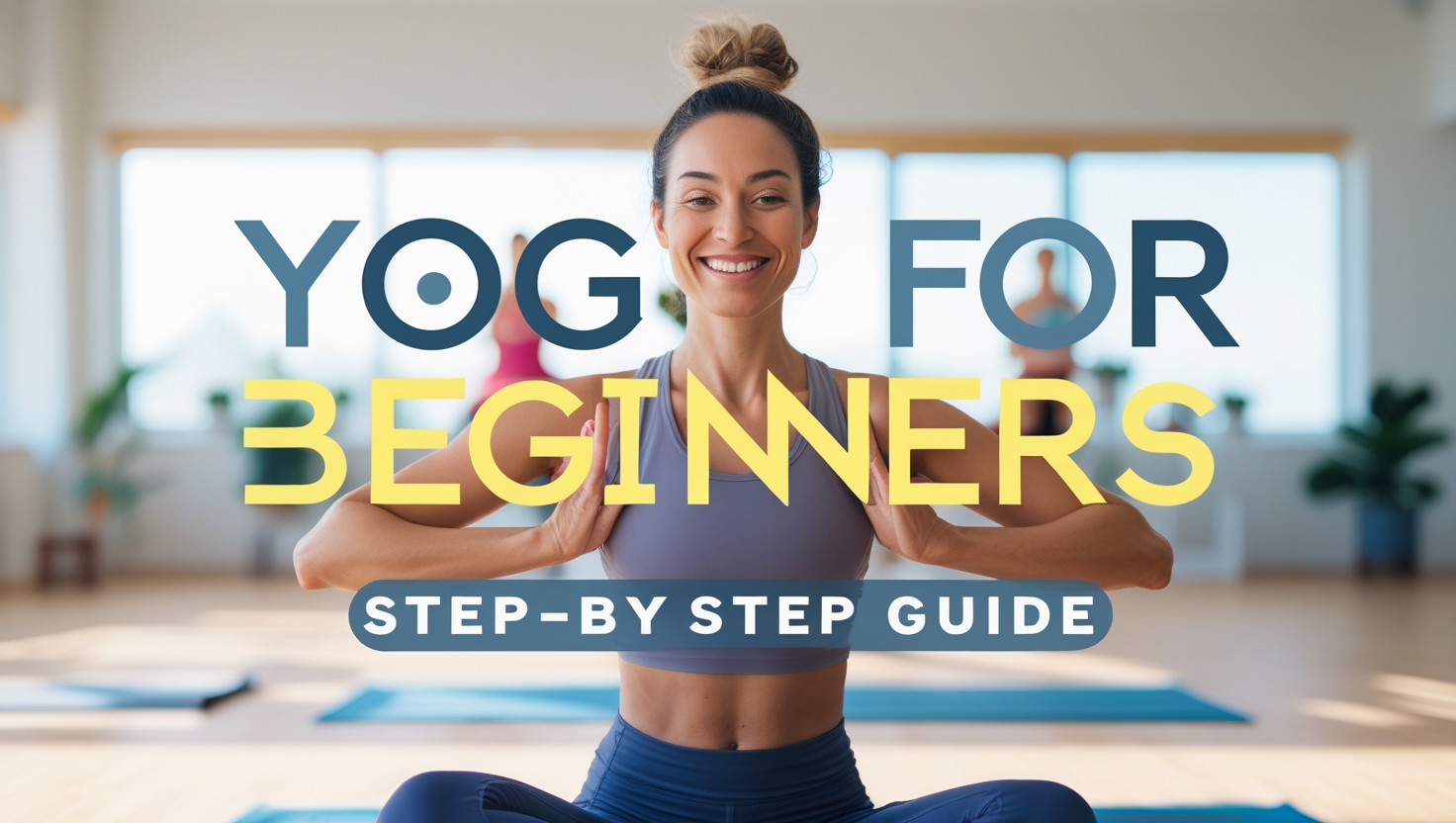



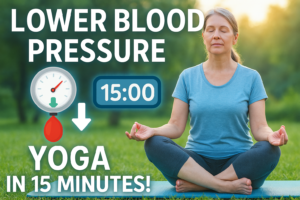

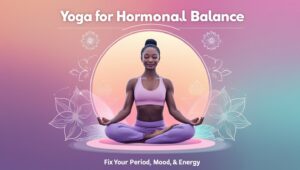

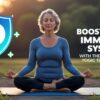
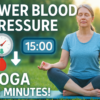




Add comment